Two exciting working days of the Vietnam Private Economic Forum 2025 with thousands of opinions and suggestions have created an "action map" for private enterprises to affirm their aspiration to accompany the Government in bringing Vietnam to prosperity.
The heads of the Forum's dialogue sessions have completed a "heavy task" when sitting in the "hot seat" to discuss the "four key pillars" of the economy in the new period, demonstrating Vietnam's resilience and aspiration to rise up.
During the preparation journey, the Forum has gone through 12 dialogue sessions in many localities, attracting more than 3,600 delegates and 3,000 opinions. The high-level dialogue session is where that intelligence and aspiration converge, focusing on four pillars: international integration, institutions, innovative technology, capital and human resources.
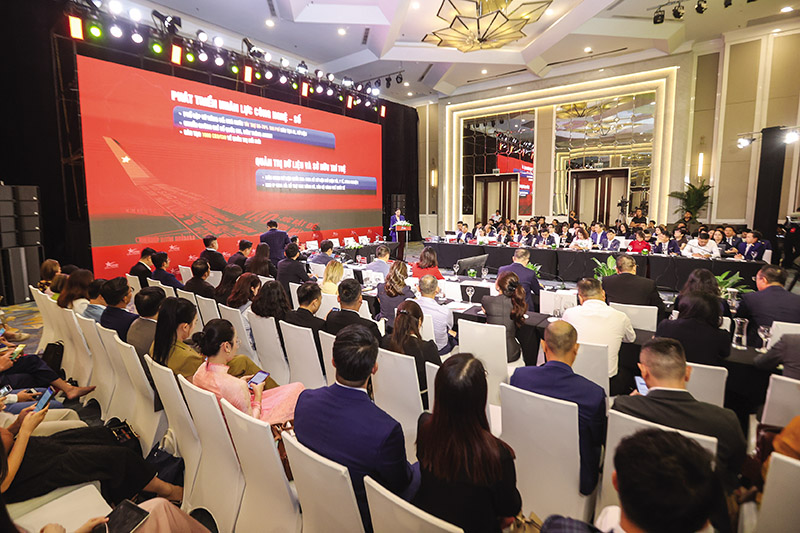 |
| Vietnam Private Economic Forum 2025 attracts entrepreneurs, experts and international organizations to participate in 4 thematic dialogue sessions |
International integration and institutions
The story of Vietnamese enterprises reaching international level is clearly demonstrated in the wood and furniture, steel structure, or agricultural products industries, where national enterprises have affirmed their position in the global market. Businessman Mai Huu Tin, Chairman of the Vietnam Young Entrepreneurs Association, term IV, Chairman of the Board of Directors of U&I Group, emphasized that export continues to be a strategic spearhead, but it is necessary to choose the right industry with global advantages.
Enterprises raised a series of challenges such as dependence on imported raw materials, slow VAT refunds, high logistics costs, and difficulty in building brands. They hope that with Resolution 68-NQ/TW, the voices of enterprises will be heard and problems will be resolved more quickly.
To realize the spirit of “development creation” of Resolution 66-NQ/TW, it is important to deeply dissect institutional “bottlenecks” from many perspectives - from the thinking of law-making, the way of operation of multi-industry enterprises, to technical problems in regulations and standards. This is the root of all development problems: institutions can be the launching pad, but can also become the biggest rock holding back the launching pad.
Experience from multi-industry private corporations like TTC shows that each sector - from agriculture , energy, real estate, to tourism - faces its own legal barriers in accessing green capital, planning tourism areas, policies for industrial parks, or overlaps in investment laws.
In the construction sector, overlapping and outdated regulations are causing great waste, such as the case of Secoin Joint Stock Company proposing to remove standards that are no longer suitable.
Clearly, institutional reform must be a “breakthrough of breakthroughs”. Businesses not only need to be “untied”, but also need to be empowered by an accessible, easy-to-comply legal system and an administrative apparatus that truly serves and creates. Codifying important resolutions to ensure stability and enforceability is a recommendation that is worth studying in depth by competent authorities.
Businessman Luu Thanh Mau, Vice President of the Vietnam Young Entrepreneurs Association and General Director of Phuc Khang Group, said that the gap between policy and implementation, overlapping laws, and inconsistent policies are the biggest “bottlenecks”. Institutional reform needs to be a “breakthrough of breakthroughs”, creating a transparent, stable, and safe environment.
Opinions from businesses and the Asian Development Bank (ADB) emphasized that for the private sector to become a real driving force, an enabling institutional framework and public-private partnership (PPP) initiatives at the national level are needed. ADB affirmed that it will continue to accompany Vietnam through the Country Partnership Strategy 2023 - 2026, with a focus on green and inclusive growth, promoting innovation, expanding access to finance for small and medium-sized enterprises, as well as supporting the PPP legal framework and renewable energy projects and sustainable finance.
Technology, capital and human resources
A new strategic awareness has been affirmed: the law of global competition is no longer “big fish eat small fish”, but “high-tech fish surpass low-tech fish”. Resolution 57-NQ/TW clearly states that breakthroughs in science and technology, innovation and digital transformation are inevitable paths, in which the private economy must become the pioneering force.
The question is: how to fill the “gaps” in the innovation ecosystem? How to make R&D tax incentives or sandbox mechanisms actually come into practice?
Ms. Truong Ly Hoang Phi, Vice President of Ho Chi Minh City Young Entrepreneurs Association, President of IBP and InnoEx, said that Vietnamese enterprises are facing great opportunities to make breakthroughs thanks to science, technology and innovation, but also face challenges in accessing, applying and mastering technology.
There are key bottlenecks that need to be addressed in the national innovation ecosystem. In the fintech sector, the biggest barrier is the regulatory framework that has not kept up. An effective fintech sandbox will help Vietnam not miss out on opportunities.
In agriculture, technology is the key to increasing added value, but investment in deep processing technology is limited. Policies to encourage R&D in high-tech agriculture need to be more substantial.
In the real estate sector, Proptech can help increase transparency and efficiency, but application is still problematic. Building a national real estate database and a suitable legal framework is a prerequisite.
“For Vietnam to become a regional technology hub, there is no other way than strong and substantial investment. Businesses need a breakthrough mechanism for the Science and Technology Development Fund to operate effectively, R&D costs to be deducted appropriately, and above all, an open and creative legal corridor for new business models to be tested and developed,” said Ms. Phi.
Good institutions and good technology, but without human resources and capital, success is still far away. The internal strength of a business is capital and human resources, two fundamental factors that determine its longevity. The question is: how to open up capital flows to achieve the target of 2 million businesses by 2030? How to build a new generation of managers capable of shouldering the future?
Mr. Tran Bang Viet, Founder & CEO of Dong A Solutions emphasized: “If integration, institutions and technology are external factors, then in the end we still have to return to the core foundation which is internal strength. Enterprises can only absorb external opportunities when their internal strength is strong enough.”
To be technologically autonomous, first of all, we must be autonomous in R&D human resources, build a “Make in Vietnam” ecosystem to attract and retain a team of high-tech scientists and engineers. At the same time, there is the problem of capital, which requires a medium and long-term capital incentive mechanism, encouraging private enterprises to boldly invest and improve competitiveness.
Management human resources are also a major challenge in the global talent race. Therefore, a national strategy for developing high-quality human resources, especially the next generation of leaders, is considered key.
Internal strength is the key to breakthrough
The Vietnam Private Economic Forum 2025 closed with a gong-beating ceremony. The solemn sound of the gong was a “command” to open a new journey: turning resolutions into actions, commitments into results, with new spirit and determination.
The Forum issued a Joint Statement with many commitments to action, affirming the key role of the private sector in the goal of turning Vietnam into a strong and prosperous nation by 2045. The business community pledged to accompany the Government in the spirit of "Co-creating institutions - Liberating resources - Raising national governance standards".
A series of initiatives were launched such as the National Program to train 10,000 CEOs; the Program of Each Young Entrepreneur Mentoring Two New Entrepreneurs, aiming to transform 5 million business households into enterprises; and the development of the Vietnam Private Enterprise Capacity Index (VBCI) to enhance competitiveness. The VPSF Organizing Committee also committed to maintaining annual dialogue and monitoring policy implementation.
It can be seen that the private business community not only “complains about difficulties”, but also proactively offers advice, affirming its role as an important driving force of the economy. Businesses cannot go it alone, need a national action program on brands, standards, green finance and trade promotion. Institutional reform must be a “breakthrough of breakthroughs”, shortening the gap between policy and implementation, creating a transparent, stable and safe environment.
Meanwhile, technology and innovation are the “competitive weapons” of the new era, requiring sandbox mechanisms and incentives for R&D so that the private sector can truly take the lead. And the foundation of all development is capital and human resources: from credit policy reform to unlock capital for small and medium enterprises, to national strategies on talent and leadership succession.
“We hope that the Forum will become an annual channel for consultation, where opinions are provided to the Government and the National Assembly and the resolution's 'four pillars' put into practice, making practical contributions to the country's development. Thereby, businesses will have more motivation to develop,” emphasized Chairman of the Vietnam Young Entrepreneurs Association Dang Hong Anh.
The Forum has opened a new journey for the private economy, but the road ahead is full of challenges, with old “bottlenecks”, right when opportunities for integration and innovation are opening up. The four pillars dissected at the Forum are not only aspirations for development, but also a test of the mettle for the private sector to assert its position in the era of global competition.
Source: https://baodautu.vn/hoi-lenh-mo-hanh-trinh-moi-cua-kinh-te-tu-nhan-d386575.html





![[Photo] Prime Minister Pham Minh Chinh chairs meeting to deploy overcoming consequences of storm No. 10](https://vphoto.vietnam.vn/thumb/1200x675/vietnam/resource/IMAGE/2025/10/3/544f420dcc844463898fcbef46247d16)

![[Photo] Students of Binh Minh Primary School enjoy the full moon festival, receiving the joys of childhood](https://vphoto.vietnam.vn/thumb/1200x675/vietnam/resource/IMAGE/2025/10/3/8cf8abef22fe4471be400a818912cb85)


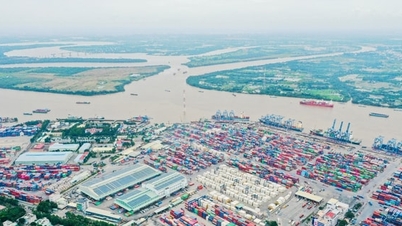





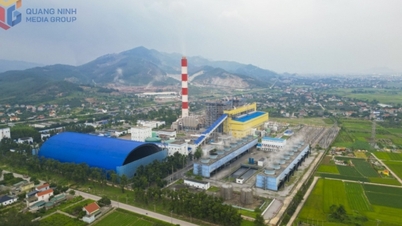





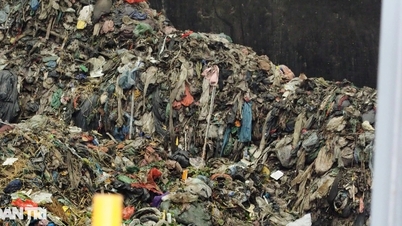
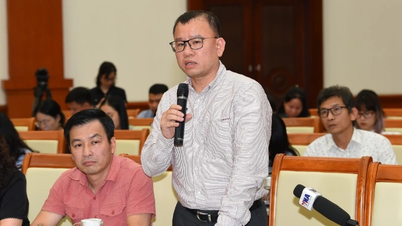


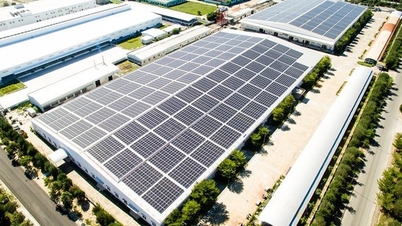









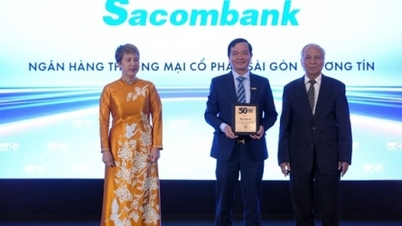



































































Comment (0)